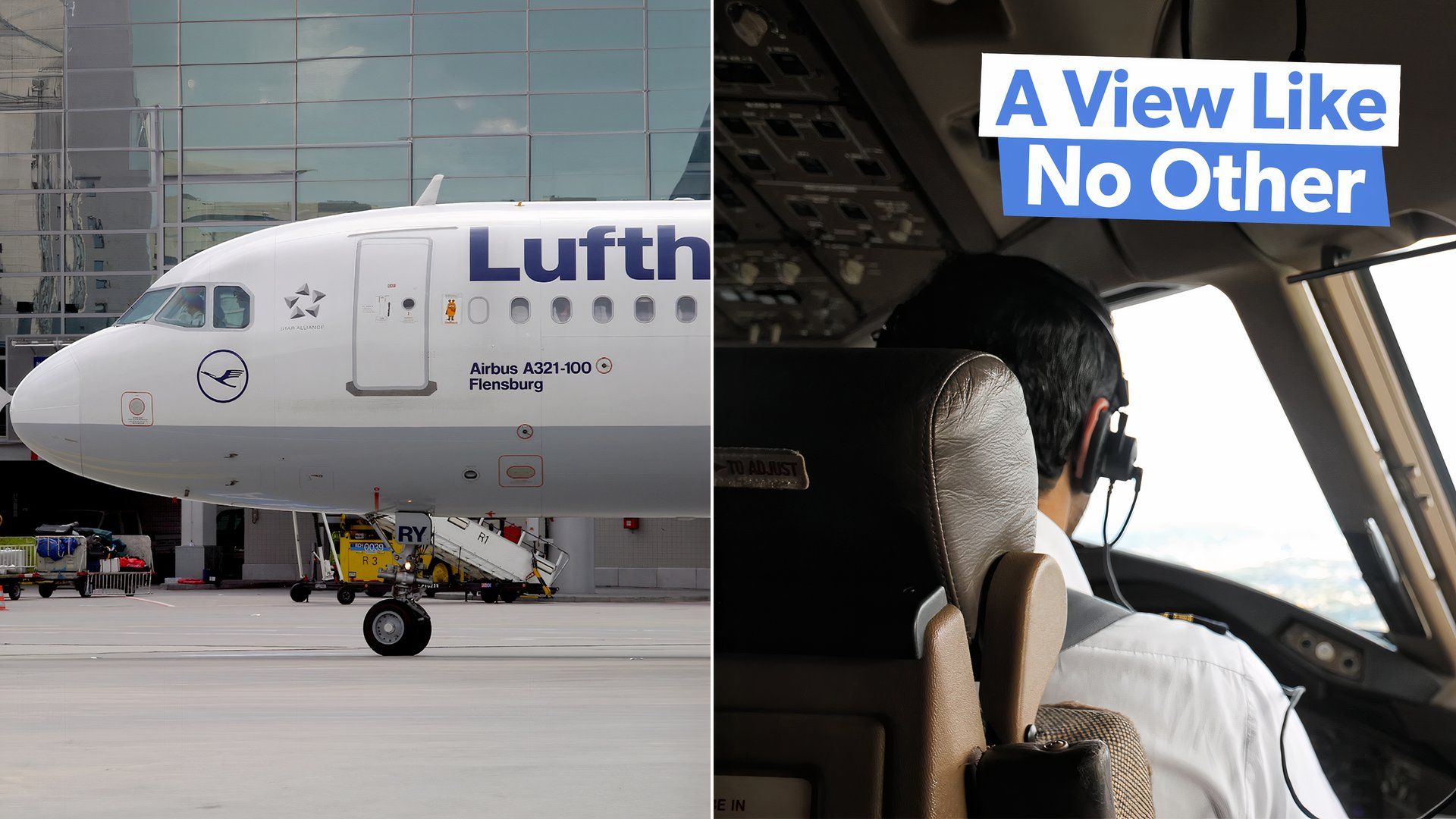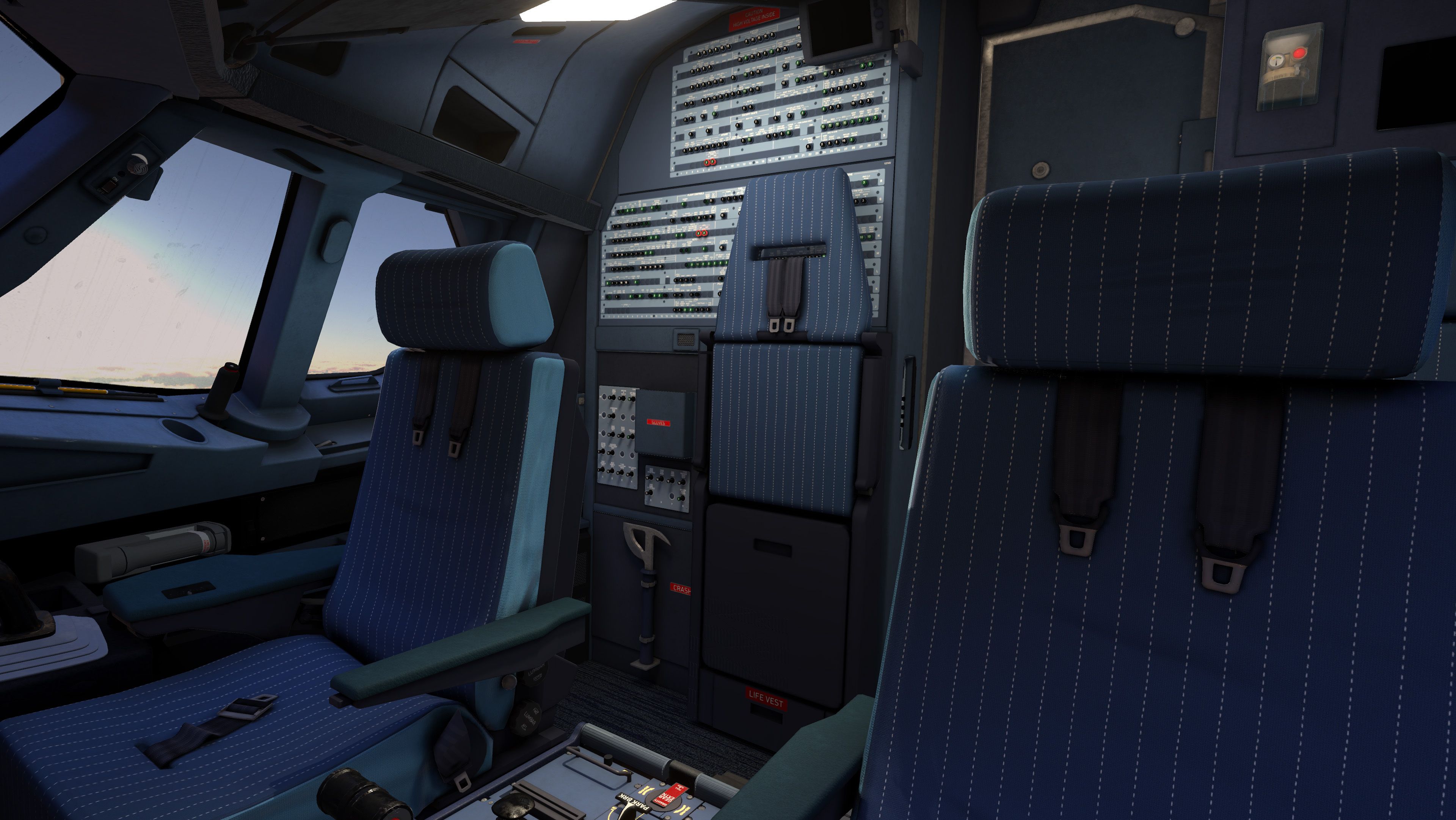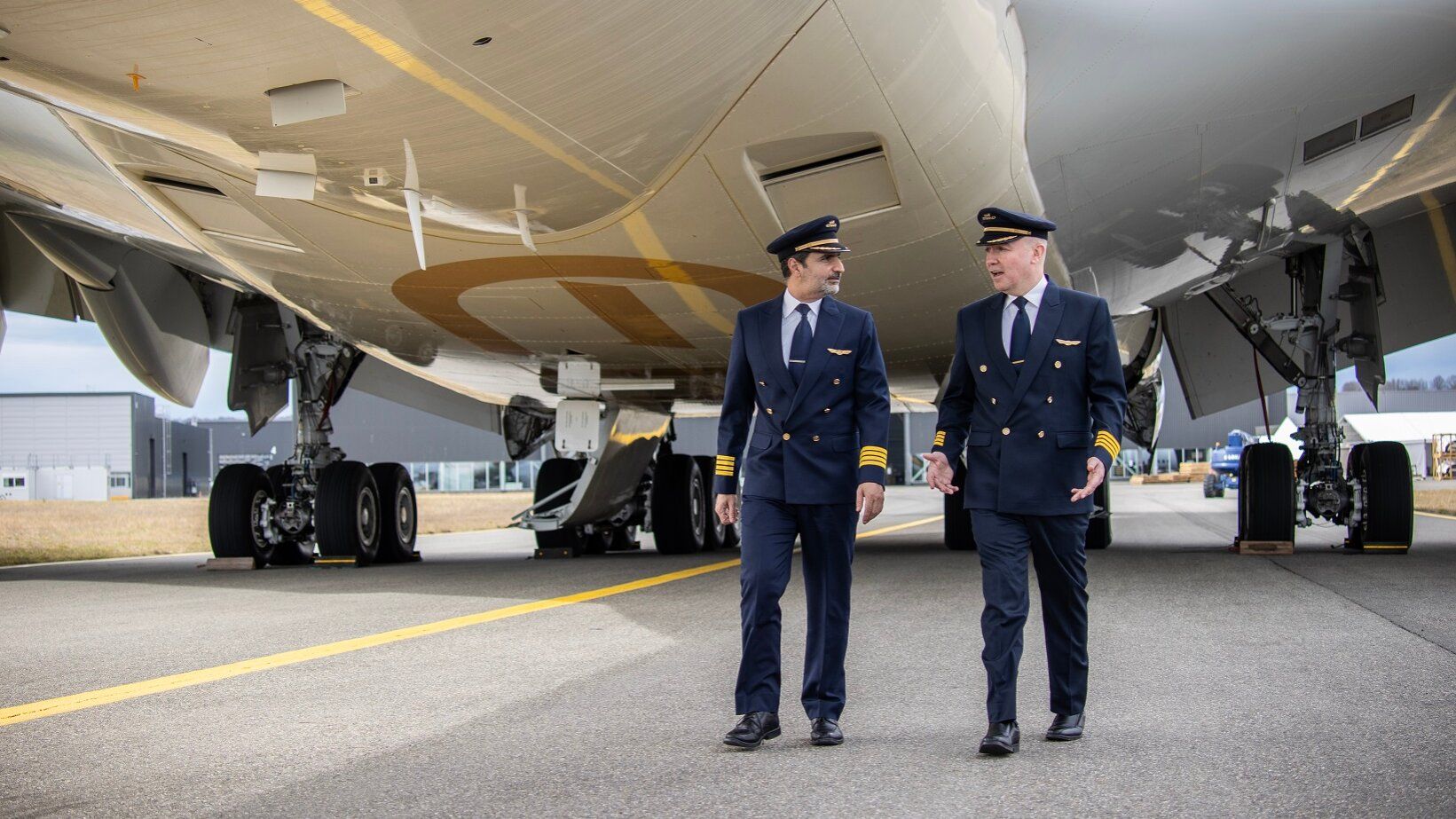Every airliner has more seats in its flight deck than are needed for just two
Pilots
. Airliners have flying seats; each sits in front of various instruments and controls. They also have “jumpseats” placed behind the flying seats. Jumpseats don’t have controls, but they are equipped with functionality that helps whoever is occupying them stay in the loop as a flight crew member. Here’s an explanation of jumpseats’ use in the US aviation market.
Jumpseats & their functions
The minimum number of jumpseats allowed on a plane for airline operations is one. Therefore, every plane has at least three seats on the flight deck. The predominant (and legal) reason every airliner must have a jumpseat is to allow an observer to occupy the flight deck during a checking event. Captains need to be observed by the
Federal Aviation Administration
when finishing their initial training and
annually thereafter by company check pilots
.
Likewise, first officers are subject to spot checks by company standards pilots at some airlines. Additionally, airlines occasionally require a validation pilot to ride the jumpseat when a pilot is new to an airport or operational theater. For instance, pilots might need an observer on their first trip to Bogotá or Aspen to watch the operation and provide insights.
Photo: Airbus
One further “official” justification for the jumpseat’s presence is to allow company or union auditors to have an observational seat. Airlines’ standard practice is to randomly place LOSA observers (Line Operations Safety Assessment) on routine revenue flights. According to the FAA, LOSA is a non-punitive program that allows airlines to identify and manage risk behaviors and observe Standard Operational Procedural (SOP) compliance by placing a qualified line pilot on the jumpseat.
Unlike a checkride, a LOSA observation cannot be grounds for punitive action but is instead used to better understand what works and what pilots struggle with during everyday operations. LOSA observations are always conducted by a company pilot and never a regulator.
Multiple jumpseats
Many airliners have more than one jumpseat. For example, every widebody and plenty of narrowbodies, like the
Airbus A320
family, have two jumpseats and two flying seats. Even some operators of the
Boeing 737
, which has a notoriously cramped flight deck, have managed to squeeze two jumpseats in due to an agreement between the pilots, their union, and the airline. The main reason for this, and the benefit of having two available jumpseats, is that off-duty airline pilots, company dispatchers, and approved FAA personnel can ride the flight deck jumpseat if there are no seats in the back.
This is how many commuting pilots get to and from work, especially during the busier summer travel season. Without access to flight deck jumpseats, airlines would likely be forced to pay for space-positive travel for commuting pilots during the summer since so many wouldn’t be able to travel from their homes to their bases. The vast majority of jumpseat use is for off-duty pilot travel to get to and from work.
Jumpseat riders
Though most jumpseat riders are commuting pilots, dispatchers can ride on their airline’s jumpseats. Dispatchers don’t frequent the jumpseat nearly as often as pilots because their job requires them to live in the airline’s main hub. Unlike pilots,
dispatchers have a job that resembles the rest of the workforce
(though many bid for schedules using seniority, like pilots).
Though it’s uncommon to see a dispatcher request a jumpseat, some airlines require them to ride it once a year to stay in touch with the flight crew experience on the line. Likewise, the FAA has a program that allows air traffic controllers to observe flights. The idea is to enhance controllers’ understanding of flying the line.
Though an authorized rider is not scheduled to work when they list for a flight deck jumpseat, they immediately become a flight crew member when theyride in the flight deck. This isn’t just theoretical—the FAA and airlines consider jumpseat riders to be crew members. Jumpseaters share responsibility for flight safety and are expected to point something out if it seems irregular. Every jumpseat has an audio control panel and an available headset, allowing the jumpseater to listen to the communications.
Additionally, each jumpseat has an oxygen mask outfitted somewhere near it
in the event of rapid depressurization
. It’s the captain’s responsibility to ensure that jumpseaters are briefed on the emergency equipment on the flight deck, as well as how to operate the seat itself in case an evacuation is warranted.
There are also additional flight attendant jumpseats in various locations throughout the cabin. So long as they aren’t being used by working crew, off-duty flight attendants can commute on available cabin jumpseats in the same way pilots can ride the jumpseat. Some airlines even allow their own pilots to ride in cabin jumpseats if the flight deck is full. This is always at the captain’s discretion.
Working crew members
A further reason one of the flight deck jumpseats might be occupied is if the flight is long enough to require an augmented crew. The criteria for when a third (or fourth) pilot is needed is both legal and contractual. The Federal Aviation Regulations stipulate augmented flight crew rules in Parts 117 (crew rest) and Part 121 (airline operations), and pilot unions have also added further strictures on when a crew needs to be augmented. It always has to do with ensuring pilots have adequate rest while flying through windows of circadian low (2 am to 6 am body time).
Photo: Etihad Airways
Any augmenting crew member is on the flight deck for taxi, takeoff, approach, and landing. Otherwise, two crew members remain in the control seats unless they are observed or instructed by a check pilot. If a flight requires a three-pilot crew and the plane has two flight deck jumpseats, someone could still ride the remaining jumpseat. However, this would mean that the individual would be on a jumpseat for a long-haul flight. Hopefully, the cushions are new-ish!
Catching a ride
Every plane has at least one jumpseat on the flight deck. The main reason for the jumpseat’s presence is legal observations for checking events, but jumpseats are often used as a commuting method for pilots to get to and from work. The flight deck jumpseat is a privilege afforded to pilots and others who are allowed to ride it, and there’s a lot of etiquette expected from someone when they accept a ride. Access to the jumpseat is always decided by the captain (unless it’s a checking event), and it’s always proper to show up and politely ask for a ride with the required documents in hand.



